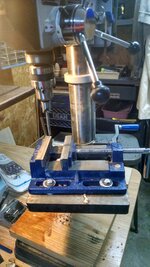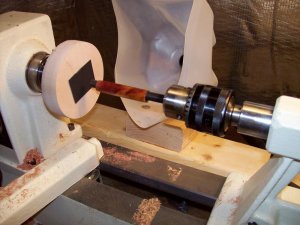Any advice, tips, or tricks on using the offset sanding jig to square blanks? (Rather than a mill.)
- What grit sandpaper do you use for this?
- At what speed is the lathe?
- Do you do it before or after turning, sanding, and polishing the blank?


